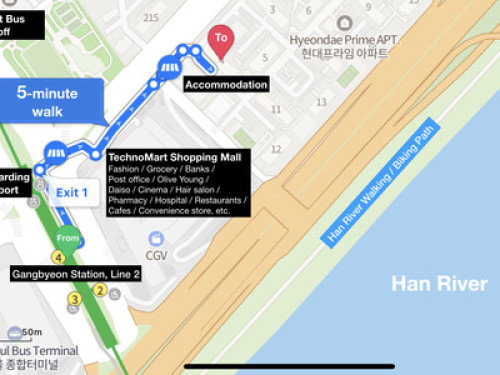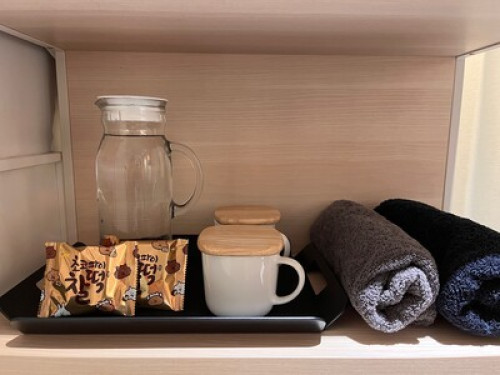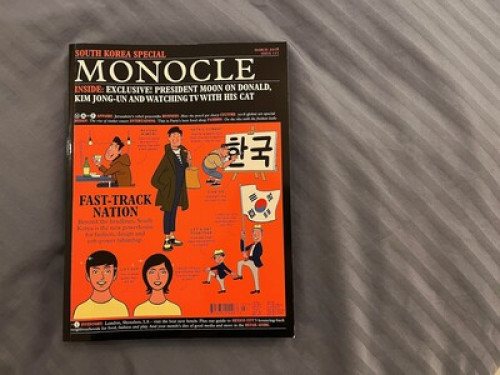As Asia's most livable city with one of the highest qualities of life and great student residences, Seoul presents an ideal destination for students from all over the world. It is the hub of technology, digital advancement, and skincare.
Here at Casita, we understand it can be difficult for you as an international student to find the perfect student accommodation in Seoul. You don’t need to worry though, because we’re here to help. Visit our website and browse all the room options on it, or call our accommodation expert team and let them help you understand everything you need to know about the different types of rooms. These multilingual experts are available 24/7 and will gladly assist you find your home away from home.
Why Book Student Accommodation in Seoul?
The academic environment in Korea is highly competitive. Koreans take education - particularly higher education - very seriously. Academics in Korea are very competitive; students treat their teachers with respect and are extremely serious about their studies. Korea has a number of prestigious universities and most of these are located in Seoul. As the fourth largest metropolitan economy in the world and with a population density of about 27,000 people per square mile, the city has more than 39 universities, most of which are well-known amongst international students and a wide range of shared or private flats.
There are a variety of fields of study available for international students considering studying in Korea. The most popular fields of study in Korea are in the arts and science, closely followed by business-related courses. If you are an international student interested in any of these fields, enrolling in a South Korean university will ensure that you get the very best education Korea has to offer. If you are more interested in the culture or language of Korea, there are also a number of culture and language-based programs which will take you into the heart of South Korea’s cities and into the pastoral, more traditional countryside. Other unique educational programs include several intensive Korean language summer programs, as well as a National Science Foundation summer institute program for graduate students from the United States.
Studying in South Korea will open up a wide range of employment opportunities for you. Graduates from Korean universities are highly sought after by employers all over the world. In addition, the South Korean economy is extremely stable, assuring you a financially secure future following graduation.
Universities in Seoul
Seoul National University
Casita has 2 accommodation options within walking distance of the university.
More than 4 bus stops surround the campus; the College of Agriculture and Life Sciences bus stop is just a 3-minute walk away.
Both Cheonggyecheon, Seoul and Lotte World are within a car ride away from campus.
Sungkyunkwan University
Our 2 accommodation options are all within walking distance of the university.
One bus stop, Myeongnyun Traditional Market, Sungkyunkwan Univ. Back Gate, is within walking distance to campus.
Samcheongdong-gil Road is just a short car ride away.
Yonsei University
Casita’s 2 accommodation options are within walking distance of the university.
Yonsei Univ. bus stop is the closest to campus.
Sinchon feewing Point can be reached by car.
Korea University
Casita offers 2 accommodation options within walking distance of the university.
Korea Univ. bus stop is the closest to campus; it is within walking distance.
Ihwajang is just a short ride away from campus.
Student Life
Is Seoul good for students?
According to QS Best Student Cities Ranking Top 10, Seoul is one of the best cities for a high-quality student experience with its state-of-the-art campuses, jaw-dropping technology, refreshing nature, and breathtaking historical sites.
Is Seoul safe for international students?
Seoul is an extremely safe city with a low rate of crime and violence. Its level of safety is similar to that of most European cities and higher than most American ones. International students can rest assured and enjoy the city attractions and appreciate the nightlife; whether solo or together with friends.
What is Seoul's weather like?
The weather is one of a kind in Seoul as the seasons are generally very distinctive in South Korea. Summer lasts from June till August; it is usually very hot and humid. From December till February it is winter, which is typically cold and snowy. Autumn lasts from September till November and it’s spring from March to May; they are ideally warm with clear blue skies.
There are various activities you can do in any of the four seasons. During winter, you can ice skate at Seoul Plaza (City Hall), ride a tricycle to see the Bukchon Area, visit Namsan Tower, or enjoy a karaoke night with friends. You can visit Grevin Wax Museum to meet world leaders, buy cheap winter clothes at Insadong or study in a themed cafe with friends in Summer. Autumn and spring are the perfect chance to enjoy outdoor places, like the Jamsil Hangang Park, Samcheonsa Valley, and Seosomun Historical Park.
Is studying in Korea expensive?
When compared to other popular countries to study abroad like the United States, Canada, the United Kingdom, etc. studying in South Korea is much cheaper. Even the living expenses of the student are not as high as those of other countries.
Must-Visit Places in Seoul
Gyeongbokgung Palace is the largest and most impressive of the Five Grand Palaces of Seoul, you can easily find Gyeongbokgung Palace by simply following the hordes of visitors who make their way there every day. Originally built in 1395 by the Joseon Dynasty, the enormous palace complex has been destroyed numerous times over the centuries, and many of the beautiful buildings we see today only date to 1867. The Korean architecture is stunning throughout; highlights include the royal banquet hall which occupies a scenic spot on an artificial lake and the king’s quarters with their luxurious interior. A fascinating place, there are a plethora of royal rooms and buildings for visitors to explore. Watching the changing of the guard ceremony at the main entrance of Gwanghwamun is an absolute must.
The National Museum of Korea is an absolute must if you are interested in learning more about the nation’s history. The interesting and educational exhibitions take you from prehistoric eras right up until modern times. In addition to the wealth of information, there are loads of amazing Korean artworks on display. While the ten-story pagoda certainly steals the limelight as it towers precariously in the museum, the Silla Golden Crown is just as special due to its intricate craftsmanship. With around 15,000 artworks, historic artefacts, sculptures and more on display, the vast concrete building in which the museum is housed will certainly open your eyes to a wealth of Korean history and art.
The delightful Buddhist Bongeunsa Temple was founded in 794 on the slopes of Sudo Mountain. It somehow still retains its peaceful atmosphere despite the skyscrapers that now rise up around it. A popular tourist destination, Bongeunsa is the largest and wealthiest temple in the capital. This is visible in the wonderful carvings of the Buddha that coat the interior of the temple and the stunningly manicured gardens surrounding it. There is lots of amazing architecture on show, of which the colourful Main Buddha Hall is the undoubted highlight. Visitors can also opt to lead the life of a Buddhist monk for a few hours and learn about Buddhist culture and traditions.
Additionally, Seoul has various free student attractions, including theatres, parks and cultural neighbourhoods. If you are into parks, try visiting Seoul forest, the central park of Seoul, where you get to enjoy more than 595 thousand meter square of unique plants and green scenery. You can also check Iwha Mural Village if you are an art enthusiast; it is an industrial village that was recently reconstructed as an art and cultural centre. Moreover, if you love movies, you can enjoy a free movie night inside Cinematheque KOFA or Myeongdong Art Theater, famous theatres that mostly showcase classic and independent films.
Transportation in Seoul
Seoul has a modern public transportation system that is extremely dependent on the subway and bus lines. While living in the city, it is recommended that you buy a transportation card "T-money Card" for subway, taxi rides and bus ones. This card is a prepaid card that could be recharged based on your needs; all you need after recharging it is to pass it through the machines in the subway station or on the bus.
The bus system inside Seoul depends on four types of coloured buses; The yellow buses travel around the downtown area, while the blue buses connect the suburbs with the downtown area. Green buses connect residential areas with the subway, the bus stations, and travel within a single district, and red buses or high-fare buses connect the downtown area with other neighbourhoods; they are buses that do not offer any discounts to the passengers. Furthermore, you can make use of the inner city’s free shuttle buses for foreigners with language recordings explaining the city’s history.



















